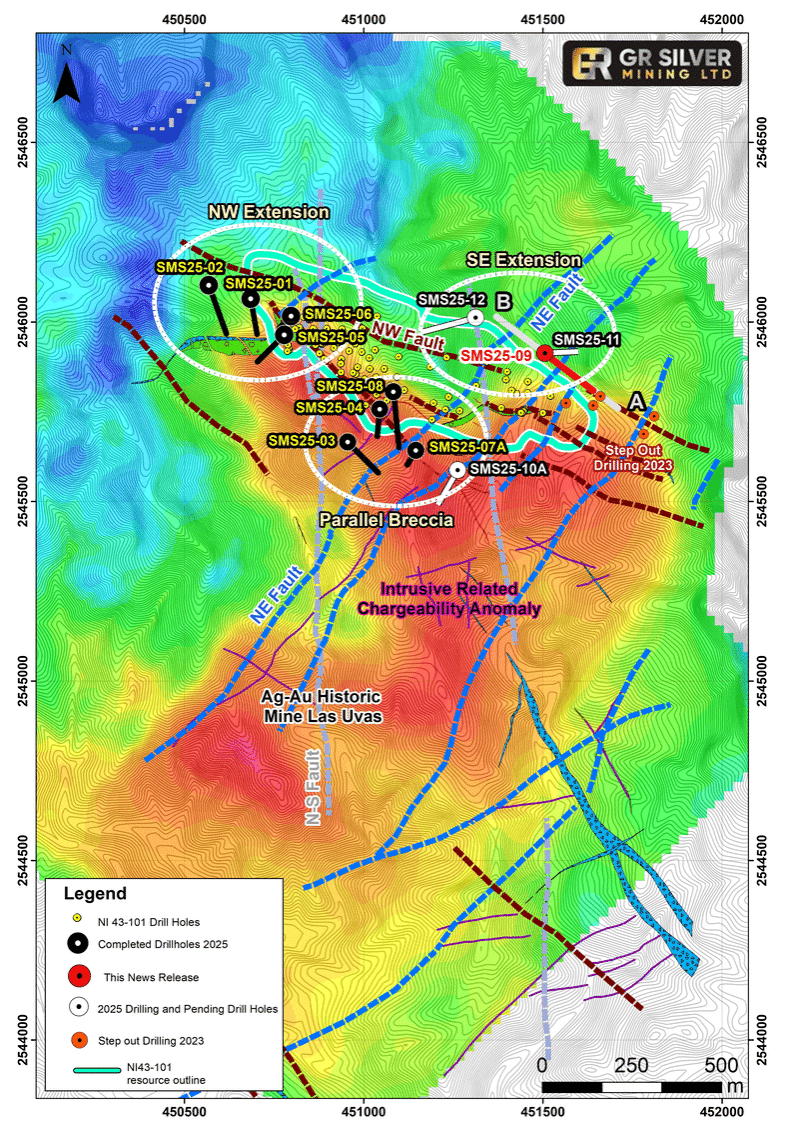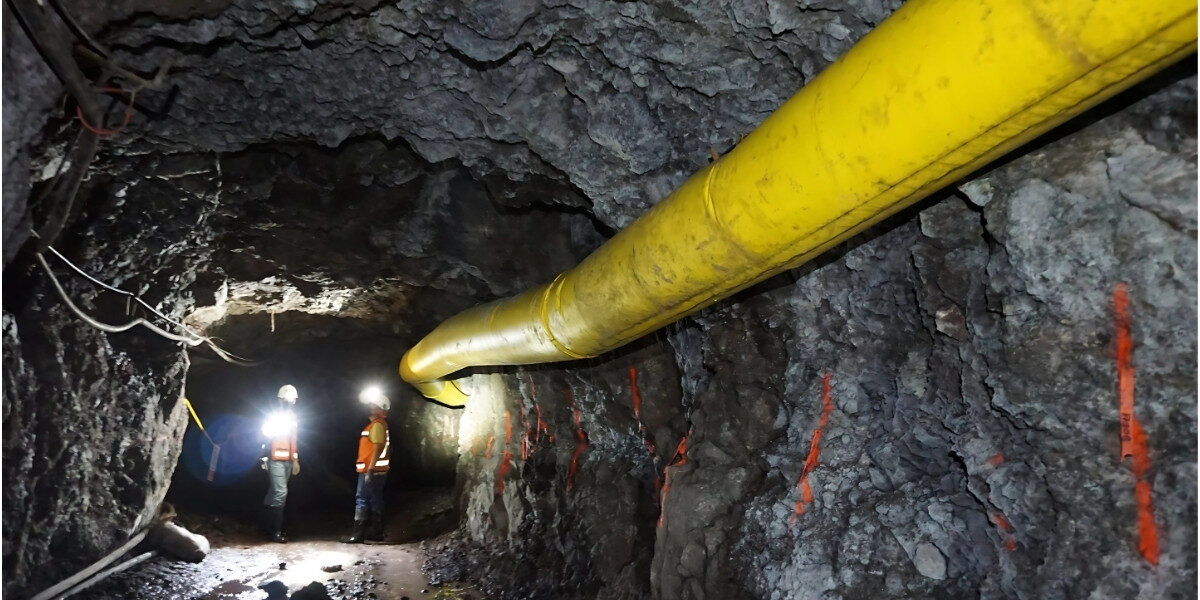The San Marcial deposit consists of wide chlorite–hematite silver rich hydrothermal breccias within a favorable structural setting, formed by intersecting NW–NE oriented regional structures. These intersections host sizeable geological traps in porous volcanoclastic rocks, as part of a robust epithermal system hosted along the northern edge of a large, regional porphyry intrusive setting.
Chargeability Map and Resource Update
-
The San Marcial Area geology can be subdivided into two distinct rock types:
-
Basement: undeformed late Jurassic volcaniclastic rocks.
-
Overlying sequence: Early to Late Oligocene felsic ignimbrites, intermediate lavas, and basaltic layers, separated by an angular unconformity.
-
-
Several diorite porphyry bodies of Oligocene age intrude the stratigraphy.
-
Within the volcanic sequence, another angular unconformity separates two eruptive phases:
-
30–28 Ma felsic ignimbrites.
-
28–26 Ma volcanic phase.
-
-
The silver exploration targets are hosted along a NW-SE trending crustal fault dipping 60° NE, extending 1.5 km in strike length and nearly 600 m down dip.
Mineralization Styles at San Marcial
The San Marcial resource hosts a multi-phase system of high-grade silver hydrothermal breccias, indicating that the system remains open at depth.
Three main phases of breccia mineralization:
-
Tectonic breccia - along the fault hanging wall, with hematite-rich matrix.
-
Ore breccia filling stage - containing the highest silver grades at the centre of the structure.
-
Post-crackle hydrothermal breccia - along the footwall.
Key features of the ore breccia filling stage:
-
Telescoping of Ag-Au-Pb-Zn epithermal vein systems.
-
Disseminated acanthite-argentite in calcite cement from a boiling event.
-
Thin calcite veins running parallel to the breccia.
Alteration and Mineral Associations
-
Upper system: barite, fluorite, magnetite.
-
Lower system: epidote, chlorite, tremolite, actinolite, tourmaline, apatite, titanite, muscovite.
-
Cross-cutting relationships suggest mineralization occurred within a short geologic window, bracketed between:
-
Dioritic intrusions (~27.6 Ma).
-
Younger rhyolitic dykes (~26.4 Ma).
-
Multi-Commodity Potential
While San Marcial is primarily a silver deposit, mineralization is multi-phase, also hosting:
-
Zinc, lead and copper closely associated with silver.
-
Gold mineralization in peripheral epithermal veins and stockworks.
-
Recent GR Silver Mining exploration drilling has identified additional occurrences beneath the hydrothermal breccia and beyond the resource area.

